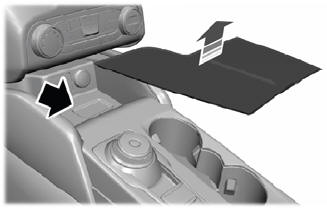Ford Escape: Electronic Engine Controls / Diagnosis and Testing - Powertrain Control Module (PCM) Input and Output Controls
Diagnostic Trouble Code (DTC) Chart
Diagnostics in this manual assume a certain skill level and knowledge of Ford-specific diagnostic practices.
REFER to: Diagnostic Methods (100-00 General Information, Description and Operation).
| Module | DTC | Description | Action |
|---|---|---|---|
| PCM | P0219:00 | Engine Overspeed Condition: No Sub Type Information | GO to Pinpoint Test Z |
| PCM | P0297:00 | Vehicle Overspeed Condition: No Sub Type Information | GO to Pinpoint Test Z |
| PCM | P0642:00 | Sensor Reference Voltage 'A' Circuit Low: No Sub Type Information | GO to Pinpoint Test C |
| PCM | P0643:00 | Sensor Reference Voltage 'A' Circuit High: No Sub Type Information | GO to Pinpoint Test C |
| PCM | P0652:00 | Sensor Reference Voltage 'B' Circuit Low: No Sub Type Information | GO to Pinpoint Test C |
| PCM | P0653:00 | Sensor Reference Voltage 'B' Circuit High: No Sub Type Information | GO to Pinpoint Test C |
| PCM | P0685:00 | ECM/PCM Power Relay Control Circuit/Open: No Sub Type Information | GO to Pinpoint Test B |
| PCM | P0686:00 | ECM/PCM Power Relay Control Circuit Low: No Sub Type Information | GO to Pinpoint Test B |
| PCM | P0687:00 | ECM/PCM Power Relay Control Circuit High: No Sub Type Information | GO to Pinpoint Test B |
| PCM | P0689:00 | ECM/PCM Power Relay Sense Circuit Low: No Sub Type Information | GO to Pinpoint Test B |
| PCM | P068A:00 | ECM/PCM Power Relay De-Energized - Too Early: No Sub Type Information | GO to Pinpoint Test B |
| PCM | P0690:00 | ECM/PCM Power Relay Sense Circuit High: No Sub Type Information | GO to Pinpoint Test B |
| PCM | P06A6:00 | Sensor Reference Voltage 'A' Circuit Range/Performance: No Sub Type Information | GO to Pinpoint Test C |
| PCM | P06A7:00 | Sensor Reference Voltage 'B' Circuit Range/Performance: No Sub Type Information | GO to Pinpoint Test C |
| PCM | P06A8:00 | Sensor Reference Voltage 'C' Circuit Range/Performance: No Sub Type Information | GO to Pinpoint Test C |
| PCM | P06B8:00 | Internal Control Module Non-Volatile Random Access Memory (NVRAM) Error: No Sub Type Information | GO to Pinpoint Test B |
| PCM | P1793:00 | Ignition Supply Malfunction >16, <7 volts: No Sub Type Information | GO to Pinpoint Test B |
| PCM | P2510:00 | ECM / PCM Power Relay Sense Circuit Range/Performance: No Sub Type Information | GO to Pinpoint Test B |
| PCM | U300C:00 | Ignition Input Off/On/Start: No Sub Type Information | GO to Pinpoint Test B |
Global Customer Symptom Code (GCSC) Chart
Diagnostics in this manual assume a certain skill level and knowledge of Ford-specific diagnostic practices.
REFER to: Diagnostic Methods (100-00 General Information, Description and Operation).
| Symptom | Action |
|---|---|
| Driver Aid & Information > Warning Indicators/Messages/Chimes > Electronic Throttle Control (Wrench Image) > Stays On | GO to Pinpoint Test Z |
| Driver Aid & Information > Warning Indicators/Messages/Chimes > Service Engine Soon (Engine Image) > Stays On | GO to Pinpoint Test Z |
| Driver Aid & Information > Warning Indicators/Messages/Chimes > Transmission > Stays On | GO to Pinpoint Test Z |
| Start/Run/Move > Starting > No Crank > Always | GO to Pinpoint Test C |
| Start/Run/Move > Starting > No Crank > Intermittent | GO to Pinpoint Test Z |
| Start/Run/Move > Starting > Slow Crank/Battery > Intermittent | GO to Pinpoint Test Z |
| Start/Run/Move > Starting > Hard Start/Long Crank > Always | GO to Pinpoint Test C |
| Start/Run/Move > Starting > Hard Start/Long Crank > Intermittent | GO to Pinpoint Test Z |
| Start/Run/Move > Starting > Auto-Start-Stop > Inoperative | GO to Pinpoint Test Z |
| Start/Run/Move > Running > Engine Won't Shut Off > Always | GO to Pinpoint Test B |
| Start/Run/Move > Moving > Upshift Quality > Intermittent | GO to Pinpoint Test Z |
| Start/Run/Move > Moving > Downshift Quality > Intermittent | GO to Pinpoint Test Z |
| Driving Performance > Runs Rough > All Running Modes > Intermittent | GO to Pinpoint Test Z |
| Driving Performance > Idle Quality > Rolling > Intermittent | GO to Pinpoint Test Z |
| Driving Performance > Stalls/Quits > At Idle > Intermittent | GO to Pinpoint Test Z |
| Driving Performance > Backfires > At Idle > Intermittent | GO to Pinpoint Test Z |
| Driving Performance > Backfires > Acceleration > Intermittent | GO to Pinpoint Test Z |
| Driving Performance > Backfires > Deceleration > Intermittent | GO to Pinpoint Test Z |
| Driving Performance > Lack/Loss of Power > Acceleration > Intermittent | GO to Pinpoint Test Z |
| Driving Performance > Lack/Loss of Power > Cruise/ Steady Speed > Intermittent | GO to Pinpoint Test Z |
| Driving Performance > Spark Knock > Acceleration > Intermittent | GO to Pinpoint Test Z |
| Driving Performance > Spark Knock > Cruise/ Steady Speed > Intermittent | GO to Pinpoint Test Z |
| Driving Performance > Poor Fuel Economy > Highway Driving > Unloaded | GO to Pinpoint Test Z |
| Driving Performance > Poor Fuel Economy > Combined > Unloaded | GO to Pinpoint Test Z |
| Driving Performance > Hesitates/Stumble > Acceleration > Intermittent | GO to Pinpoint Test Z |
| Driving Performance > Hesitates/Stumble > Cruise/ Steady Speed > Intermittent | GO to Pinpoint Test Z |
Pinpoint Tests
.jpg) PINPOINT TEST B: POWERTRAIN CONTROL MODULE (PCM) POWER RELAY
PINPOINT TEST B: POWERTRAIN CONTROL MODULE (PCM) POWER RELAY.jpg)
 Introduction Introduction
Normal Operation and Fault Conditions Refer to the DTC Fault Trigger Conditions. DTC Fault Trigger Conditions
Possible Sources
|
.jpg) PINPOINT TEST C: REFERENCE VOLTAGE (VREF)
PINPOINT TEST C: REFERENCE VOLTAGE (VREF).jpg)
 Introduction Introduction
Normal Operation and Fault Conditions Refer to the DTC Fault Trigger Conditions. DTC Fault Trigger Conditions
Possible Sources
|
.jpg) PINPOINT TEST Z: INTERMITTENT
PINPOINT TEST Z: INTERMITTENT.jpg)
 Introduction Introduction
Normal Operation and Fault Conditions This pinpoint test is intended to diagnose and isolate intermittent concerns for all EEC subsystems. Parameter identifiers (PIDs) corresponding to a circuit can be used to aid in identifying the intermittent cause. Some circuits do not have an associated PID or the PID may not be available and must be measured using a digital multimeter. Refer to the DTC Fault Trigger Conditions. DTC Fault Trigger Conditions
Possible Sources
|
 Diagnosis and Testing - Electronic Engine Controls
Diagnosis and Testing - Electronic Engine Controls
Diagnostic Trouble Code (DTC) Chart
Diagnostics in this manual assume a certain skill level and knowledge of Ford-specific diagnostic practices. REFER to: Diagnostic Methods (100-00 General Information, Description and Operation)...
 Diagnosis and Testing - Variable Camshaft Timing (VCT) System
Diagnosis and Testing - Variable Camshaft Timing (VCT) System
Diagnostic Trouble Code (DTC) Chart
Diagnostics in this manual assume a certain skill level and knowledge of Ford-specific diagnostic practices.REFER to: Diagnostic Methods (100-00 General Information, Description and Operation)...
Other information:
Ford Escape 2020-2025 Owners Manual: Inspecting the Tire for Wear. Inspecting the Tire for Damage
Inspecting the Tire for Wear When the tread is worn down to one sixteenth of an inch (2 mm), tires must be replaced to help prevent your vehicle from skidding and hydroplaning. Built-in treadwear indicators, or wear bars, which look like narrow strips of smooth rubber across the tread will appear on the tire when the tread is worn down to one sixteenth of an inch (2 mm)...
Ford Escape 2020-2025 Owners Manual: Setting the Liftgate Opening Height
Open the liftgate. Stop the liftgate movement by pressing the control button on the liftgate when it reaches the desired height.Note: Once the liftgate stops moving, you can manually move it to the desired height. Press and hold the control button on the liftgate until a tone sounds, indicating programming is complete...
Categories
- Manuals Home
- 4th Generation Ford Escape Owners Manual
- 4th Generation Ford Escape Service Manual
- Power Outlet - Vehicles With: 12V Power Outlet
- Plug-In Hybrid Electric Vehicle Drive Modes
- Accessing the Trip Computer. Resetting the Trip Computer
- New on site
- Most important about car
Master Access Code
What Is the Master Access Code
The master access code is a factory-set five-digit entry code. You can operate the keypad with the master access code at any time. The master access code is on the owner’s wallet card in the glove box and is available from an authorized dealer.
Displaying the Master Access Code
To display the factory-set code in the information display:


 PINPOINT TEST B: POWERTRAIN CONTROL MODULE (PCM) POWER RELAY
PINPOINT TEST B: POWERTRAIN CONTROL MODULE (PCM) POWER RELAY

 Introduction
Introduction